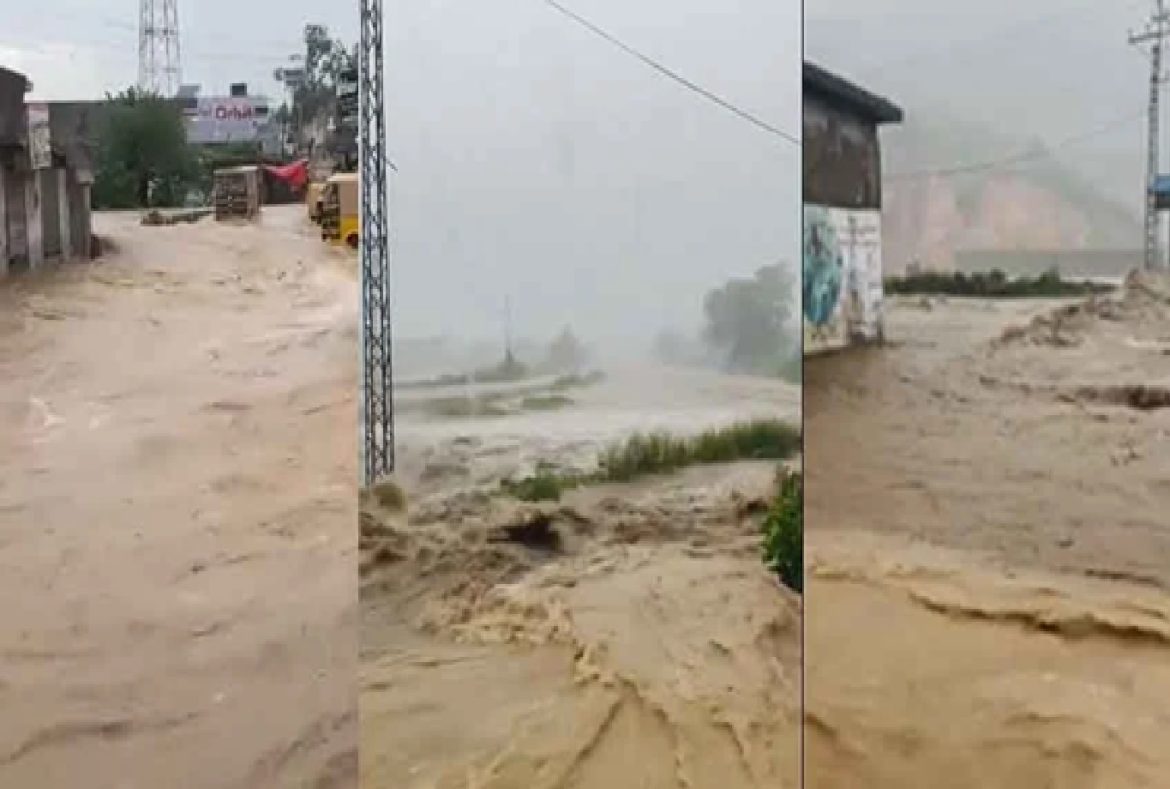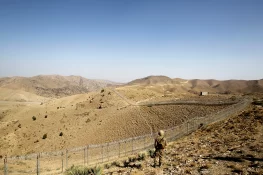A devastating cloudburst in Swabi district, Khyber Pakhtunkhwa, has claimed at least 18 lives, with officials warning that the death toll may rise as rescue teams continue to recover bodies from collapsed houses and flood-hit areas.
The sudden downpour late Monday triggered powerful flash floods in the Dalori Gadoon area, one of the worst-hit regions. Entire neighborhoods were submerged, while dozens of houses were washed away or buried under mud and debris. Several residents remain trapped or missing, with emergency workers struggling to reach them.
Rescue Efforts Hampered by Weather
According to local rescue officials, search and recovery operations are ongoing but face significant challenges. Continuous rainfall, washed-out roads, and disrupted communications have made access difficult.
“So far, 18 bodies have been recovered, but more are feared trapped beneath the rubble,” a rescue spokesperson said. Villagers climbed onto rooftops to save their lives, while others were cut off from nearby communities due to collapsed roads and bridges.
The provincial government has deployed rescue teams with boats and heavy machinery, yet progress remains slow. Many affected residents are relying on local volunteers for immediate assistance.
Infrastructure in Ruins
The floods have caused widespread damage to infrastructure in Swabi. The main road linking Bata to Darorai was completely washed away, halting all vehicular movement. Residents were seen using makeshift rope bridges to cross streams and reach safer areas.
Electricity, telephone, and internet services have also been suspended in several parts of the district, further isolating survivors and complicating coordination of relief efforts.
Officials warn that rebuilding could take weeks, if not months, due to the scale of destruction.
Wider Impact Across Khyber Pakhtunkhwa
The disaster in Swabi is part of a larger pattern of destruction across northern Pakistan, where monsoon rains have intensified in recent weeks. Similar tragedies have also struck the country’s mountainous regions, with cloudburst-triggered floods in Azad Kashmir and Gilgit-Baltistan causing further devastation.
In Shangla district, at least 27 bridges and 56 schools were swept away by floodwaters, according to government reports. Roads connecting villages to major towns have been destroyed, cutting off essential supplies.
Similarly, Swat and Battagram districts have also been hit hard, with widespread landslides and overflowing rivers forcing families to flee their homes. Relief and rehabilitation efforts are continuing around the clock in all affected areas, supported by both local and national agencies.
Climate Challenges and Recurring Floods
Pakistan has faced repeated natural disasters linked to erratic weather patterns and extreme rainfall. Experts warn that climate change is intensifying monsoon downpours, increasing the risk of cloudbursts and flash floods in mountainous regions like Khyber Pakhtunkhwa.
In 2022, catastrophic floods submerged a third of the country, affecting over 33 million people and causing damages estimated at more than $30 billion. Although the scale of the current disaster is smaller, the impact on local communities remains severe.
Humanitarian Concerns
Relief agencies are raising alarms about the humanitarian fallout. Displaced families urgently need food, clean drinking water, shelter, and medical aid. With schools destroyed and roads inaccessible, recovery will be especially difficult for children and vulnerable groups.
Local charities have begun distributing aid, but officials emphasize the need for coordinated national support to rebuild homes, restore services, and prevent further tragedies as heavy rains are forecast to continue.
A Region in Mourning
For residents of Swabi and nearby districts, the disaster has left deep scars. Families who lost loved ones gathered outside collapsed houses as rescue workers dug through rubble. Survivors describe scenes of chaos, with floodwaters rushing into homes in the middle of the night, giving many little chance to escape.
As Pakistan braces for further rainfall in the coming weeks, authorities are urging preparedness and caution. Yet for those already affected, the path to recovery will be long and painful.















